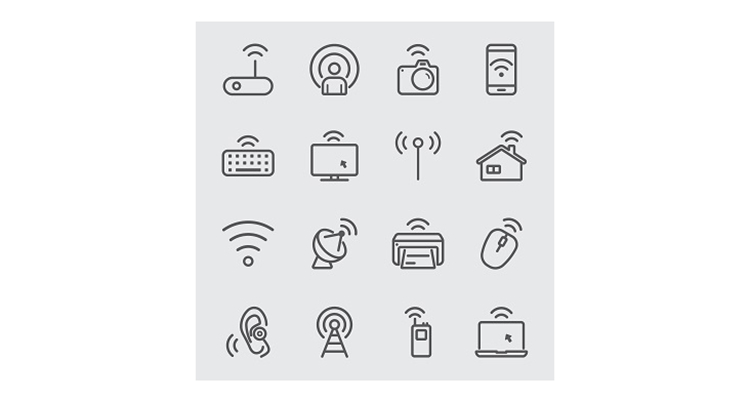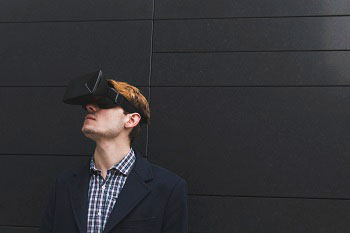The Latest RF Auction: What We Know So Far
 By Dan Daley
By Dan Daley
Special to InfoComm International
It’s time for our periodic update on spectrum — that invisible resource that pro audio counts on for wireless transmission, mobile companies covet for new services, and the government continues to auction off. We’re starting to get clarity on this big issue (though we’re far from done monitoring the situation), and it looks like perhaps spectrum reallocation won’t be as disruptive as first thought — maybe.
The Federal Communications Commission’s spectrum auction is headed into its final act, although it’s still quite a stretch. With the second phase of the auction poised to begin, it will likely take into early 2017 to find out how much and what kind of radio frequency spectrum will be left for professional wireless microphone users, such as event producers, broadcasters and houses of worship.
But even at this stage of the process, a few key outcomes have become clear.
Although 126 MHz of television bandwidth below the 698 MHz range was made available for bid by companies such as Verizon, AT&T and Comcast, the second round now decreases it to 114 MHz, so the spectrum put up by broadcasters will leave frequencies at and below 578 MHz available for professional wireless microphone use. That means that as much as half of the wireless systems in use today could remain legally operational. For instance, the microphones in Sennheiser’s A-range product line, which are tunable between 516 and 558 MHz, will remain viable for users. They’re being joined by the company’s new A1-range products, which can be tuned even lower, between 470 and 516 MHz.
“That’s still well within UHF, a range that exhibits highly favorable wave propagation characteristics,” says Joe Ciaudelli, Sennheiser’s spectrum guru. “It’s still safe to invest in systems that do not tune above 578 MHz.”
Ciaudelli says things will become even clearer once the forward auction moves into subsequent phases, after initial, more speculative bids by broadcasters get a dose of reality through what is essentially a market-based approach to spectrum reallocation.
“Now it’s up to the wireless [broadband] industry to demonstrate the demand is there for low-band TV spectrum,” National Association of Broadcasters spokesman Dennis Wharton said in a statement this summer.
And that demand remains unclear. Initial indications from the auction have been disappointing. The asking price for 126 MHz of television airwaves — taken from broadcasters to be sold for wireless use — has come in at just over $23 billion thus far, well below the hoped-for clearing target of $88.4 billion. Ciaudelli describes that initial target as “the FCC’s letter to Santa Claus,” and like many on Christmas morning, expectations may have to be dialed back.
The second round of the FCC incentive auction establishes a lower clearing target, and having to go back to a reverse auction and then a second-stage forward auction will just prolong the suspense. Some stations will fetch lower prices, and some could drop out, deciding they don’t want to sell at diminished values. Ironically, all this could also mean that prices for spectrum go up as supply does down.
“We basically had some indication of the supply side of the equation, with the announcement of the initial clearing target. Some broadcasters are willing to relinquish their license if their price is met,” says Ciaudelli. “The question remains whether the broadband service providers will submit bids that exceed the threshold to pay the broadcasters’ prices, plus cover the other costs surrounding the auction. That did not occur in the first round of bidding, so the amount of spectrum to be auctioned will be reduced and a new round of bidding will occur. This will be repeated until demand matches supply.”
As time goes by, there may be other developments that affect outcomes. For instance, as Google Fiber encounters more resistance from entrenched broadband providers in its rollout cities (in Nashville, for instance, Comcast and AT&T are pushing back against Google’s efforts to access the same utility poles they already occupy), the company is looking at plans to beam wireless broadband directly to its customers, which would increase its need for spectrum.
What Users Can Expect
Meanwhile, wireless system providers are looking to manage customers’ expectations. Michael Mason, President of CP Communications, which supplies RF-based mobile products, frequency coordination and wireless audio communications for live events, says he’s been advising clients that it’s now okay to start buying wireless audio systems again, but to “buy low” — that is, systems that operate below 570 MHz, and only if necessary to replace systems whose useful lifespans would be ending anyway.
“Maintain the level of inventory you need to operate and have backup — there’s enough certainty about the lower end of the UHF spectrum now to do that comfortably,” he says. “But there will be new technologies and products that will more efficiently use higher-band spectrum in the future, between 941 and 960 MHz, in the 1.4-GHz range, and in the 6- to 7-GHz range.”
Henry Cohen, Senior RF Design Engineer at CP Communications, says event production users within a defined geographical area will have an advantage over touring companies.
“They’re simply going to have to carry multiple bands of wireless equipment in the future — in VHF and what’s left of UHF, and in the 1.4- and 3.65-GHz ranges,” he says.
That will also lead to a new set of challenges in terms of propagation: Different frequencies have different characteristics in terms of usable distance and effective penetration of varying kinds of obstacles. A more comprehensive understanding of the advantages and limitations of the broader spectrum that will be used in live wireless operations in the future will be critical.
Cohen also recommends that wireless microphone users start reviewing their inventories now and start budgeting for spectrum reallocation. “It’s not going to happen overnight,” he says, “but it is starting to happen now, and when the final notices of reallocation are published, the introduction of new products will likely happen quickly and all at once.”
Karl Winkler, Vice President of Sales at wireless systems maker Lectrosonics, whose products are used extensively in touring, theatrical, and house-of-worship applications, says initial anxiety over spectrum loss — this time — may have been overblown. “The process is going to take longer than had been thought, but we’re not going to lose as much as we thought initially,” he says.
Nonetheless, wireless microphone systems age regardless of governmental actions, and many are nearing the end of their useful life spans, especially those at rental houses. Winkler says there’s no reason that normal replacement cycles can’t continue, as long as users budget properly and buy astutely.
“Stay away from the 600-MHz band for new purchases,” he says. “But there’s a growing amount of products available at lower UHF frequencies and in other frequency ranges.”
Touring users will have the hardest time with spectrum reallocation as UHF goes through its next iteration. Winkler says that users will have to make compromises between performance and bandwidth — a wide range of possible frequencies in a system is necessary to find enough usable channels in a particular location, but spreading them too widely results in uneven and inconsistent reception.
It’s a balance that touring professionals may have to strike on a regular basis. Theatrical users will at least face a consistent spectrum challenge, while some church users may barely notice a problem at all, especially if they’re far enough away from densely populated areas with lots of wireless activity. (There are almost certainly some churches using legacy 700-MHz systems in the U.S., unaware of — or at least largely untouched by — the spectrum turmoil of the last decade and therefore not aware that they’re violating FCC rules for which they could face fines.)
The Bottom Line
Ciaudelli says that for all the angst this phase of the auction has engendered, audio professionals will come out of the process with a few additional burdens and costs, but with enough usable spectrum to keep the industries that depend on them communicating wirelessly. He points to the fact that some of the alternative ranges outside of UHF that are now open to wireless microphones have been utilized effectively during past mega events. In those cases, operators obtained “special temporary authorizations” from the FCC, but that step will generally not be necessary going forward, and alternate ranges are proven to be viable for wireless microphone operation.
“It’ll be more work,” he says, “but it’s far from the end of the world.”





